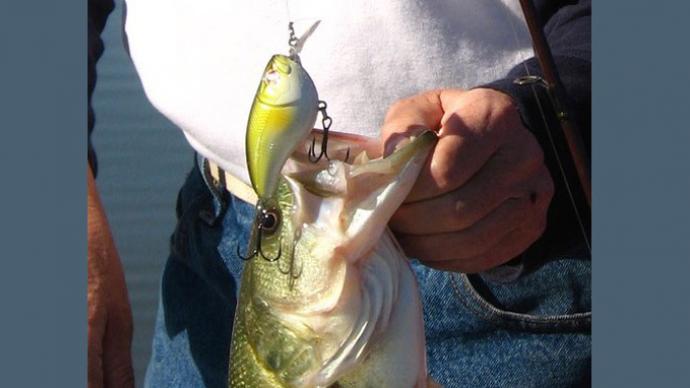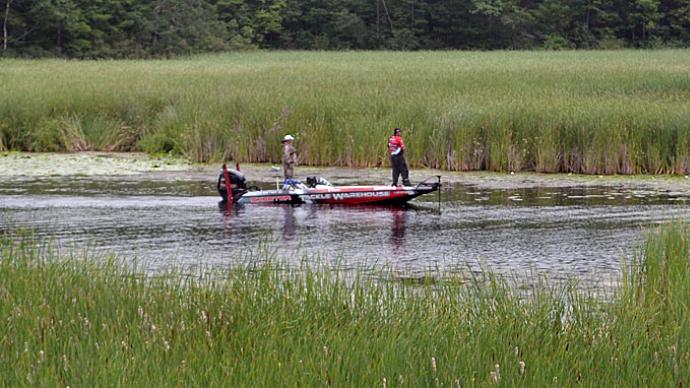JACKSONVILLE, Fla. --- While many questions remain unanswered regarding the Largemouth Bass Virus (LMBV), researchers are more confident than ever that the illness will not destroy America's bass fisheries.
Yes, some largemouth bass did die from the virus during the year 2000. But the number of kills remained at less than a dozen, nearly the same as 1999. Additionally, the number of individual bass fatalities with each incident remained relatively small, and no lakes or reservoirs have sustained kills two years in a row.
Those were some of the revelations shared during the second annual LMBV Conference convened here by B.A.S.S., Inc. More than 75 fisheries biologists, pathologists, veterinarians and other experts from universities and state and federal agencies sat in on the all-day session.
Despite their belief that LMBV outbreaks are not likely to grow to catastrophic proportions, scientists still want to solve the mystery of what makes the virus turn suddenly from just being detectable into a deadly disease. Such knowledge, they say, could help prevent further outbreaks, an objective that not only would benefit the resource but reassure bass fishermen nationwide.
"Anglers think it's serious, so it's serious," said Phil Durocher, Texas fisheries chief, in explaining why his state is researching LMBV so determinedly. Texas biologist David Terre said that the Lone Star State has begun a statewide survey of 49 reservoirs. Thus far, bass in only 8 of 31 fisheries analyzed have tested positive, with all of them in central or east Texas. The most notable are Fork, Sam Rayburn, Toledo, and Conroe, where bass died in previous years, but not during 2000. In fact, Texas researchers found no kills related to the virus last year.
"We obtained the equipment and expertise to test for LMBV," said Terre, "Also, we continued our investigation into hatcheries and into the kills on Fork and Rayburn.
"Electrofishing surveys didn't show that populations in Fork and Rayburn were seriously impacted," the biologist added. "But anglers felt the impact. There is no question that tournament catch rates were off. There was a measurable effect on catch rates."
In addition to the Texas Parks and Wildlife Department, leaders in LMBV research include the federal Warm Springs, Georgia Fish Health Center, Mississippi State University, and Auburn University.
At Auburn, scientist John Grizzle and his associates made one of the most important findings of the year regarding the virus: LMBV can remain viable in water for at least three to four hours. "Tentatively, that means you could transport the virus in a livewell," he said.
One of LMBV's biggest mysteries has been how it is moved from lake to lake, with fish-eating birds and fishermen both among the suspects. The Auburn finding reinforces the advice given to anglers by state agencies to empty all water from livewells, bilges, and bait buckets before moving boats from one lake to another.
The Auburn team also discovered, that bass could contract the virus from guppies experimentally infected with LMBV, suggesting that transmission also can occur orally.
Just as big a puzzle as how the virus is spread has been what triggers it to turn fatal. Stress and warm water have been among the leading suspects.
But this past summer, LMBV killed fish in Lake George, a 525 acre natural lake, on the Indiana-Michigan border, where the water temperature was no more than 72 degrees. Before that, LMBV kills had been confined to an area from east Texas to North Carolina and south from Table Rock Lake on the Missouri-Arkansas border. Scientists had thought the virus might not threaten fish in more northern waters. But it has.
"There's not a lot of local concern, and we won't start sampling (looking for presence of the virus in other lakes) unless it starts showing up (causing fish kills) in other lakes," said Gary Whelan of the Michigan Department of Natural Resources.
Other kills did occur during 2000 in Arkansas, Oklahoma, and Louisiana. Probably the most notable was on Lake Monticello, considered by many to be Arkansas premiere trophy bass lake.
Arkansas biologist Jon Stein said about 1,000 adult bass, most of them 16 to 24 inches long, died in the 1,400-acre lake from June into September. The largest found weighed 12 pounds.
"In August, the number of infected bass was at its peak," he said, adding that fish in lakes Dardanelle and Ouachita also tested positive for the virus, while fish in Millwood proved negative.
Just across the border in Oklahoma, LMBV-related kills occurred in Tenkiller, Grand, Hudson, and Fort Gibson.
But despite drought and low-water conditions that no doubt stressed bass in many lakes and reservoirs throughout the South this past summer, LMBV die-offs did not increase, workshop attendees emphasized, adding that's the best news of the year.
On the down side, research progress has been limited, mostly because of financial constraints. Researchers are optimistic that four LMBV projects totaling about $500,000 will be funded in the coming year with Federal Sportfish Restoration Funds that have been reverted from the states back to the U.S. Fish and Wildlife Service. These are the revenues collected from excise taxes on fishing tackle and motor-boat fuel paid by anglers and boaters.
Contact B.A.S.S. Conservation Department at (334)272-9530 or via e-mail to conservation@bassmaster.com for more information.



